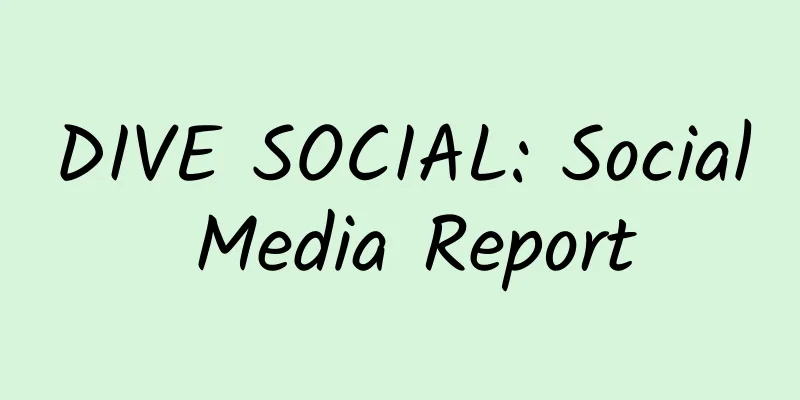DIVE SOCIAL: Social Media Report

|
The DIVE SOCIAL survey was conducted out of the need to gain a deeper understanding of the motivations and triggers that drive Chinese netizens to use social media. Based on different motivations, the report divides social media users into four types:
The research also explores differences in usage and user attitudes across cities and on different social media platforms, providing insights into how people react to brand activity on social media, including triggers and barriers to engaging with brands. Some key findings include:
Source: rtbchina.com |
<<: What should I do if I can’t tell the difference between a cold and allergic rhinitis?
>>: What should I do if I can’t tell the difference between a cold and allergic rhinitis?
Recommend
Can I take a shower during my period?
During menstruation, girls' menstrual blood a...
Is octopus an octopus? How to clean octopus
Octopus is a high-protein food, and its protein i...
Let’s take a look at what the world looks like through the eyes of people with myopia and astigmatism.
Strictly speaking, none of us can directly see th...
Semiocast: The 20 countries and regions with the most Twitter accounts
On the evening of July 31, 2012, the latest data ...
There is a small meat ball growing from the vagina to the mouth. It hurts.
If there are small lumps at the vulva, you should...
Can people with diabetes eat mooncakes? Be careful about "sugar-free mooncakes" and don't eat them casually
During the Mid-Autumn Festival, it is a Chinese c...
What can pregnant women eat to relieve heartburn immediately?
Heartburn in pregnant women is a very painful thi...
Treatment of female adnexitis
The biggest difference between women and men is t...
What happens to your body if you eat 1 bowl of rice noodles every day? Eating this way is healthier →
Rice noodles are a very popular delicacy in south...
What should you pay attention to during the first three months of pregnancy?
The fetus in the third month of pregnancy is very...
List of actors in the TV series "Savage" When will the TV series "Savage" be broadcast?
After the film and television adaptation of "...
How to lighten hereditary freckles
Hereditary freckles are not necessarily suffered ...
Can pregnant women eat pickled radish?
Can pregnant women eat pickled radishes? Regardin...
Can pregnant women eat street tofu pudding?
Various flavors of old tofu are loved by many peo...
Anal dripping sensation during menstruation
When women have their periods, they usually exper...









